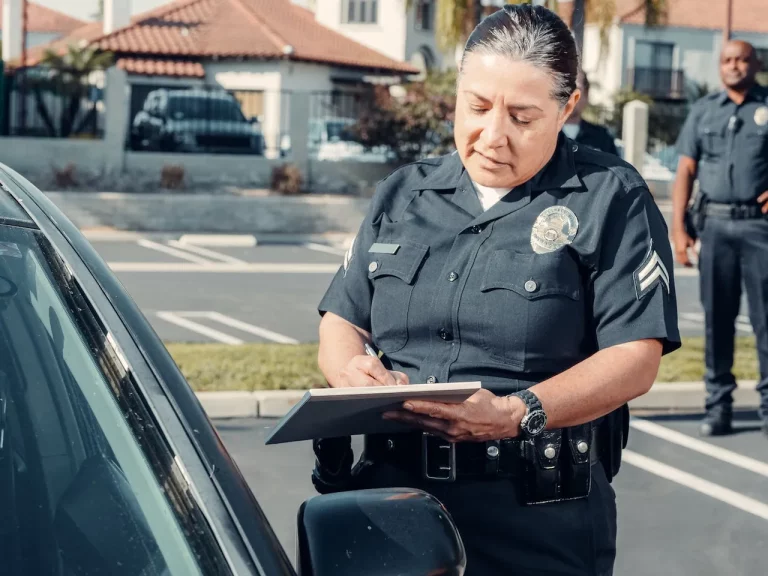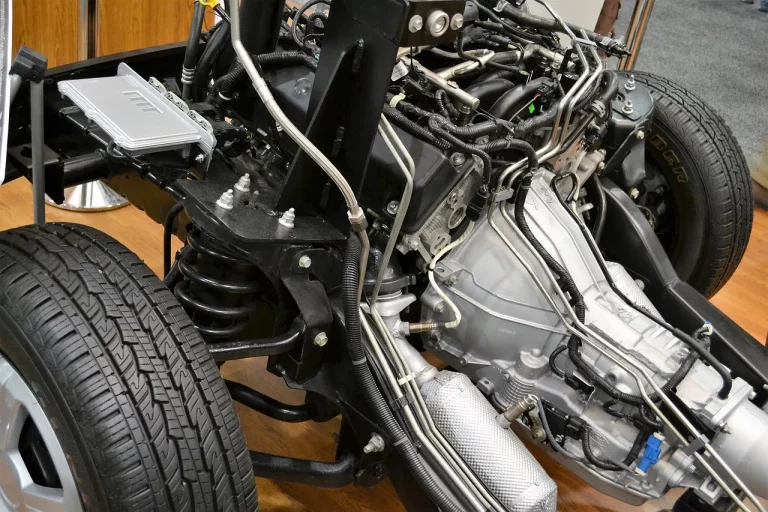Can You Fail Parallel Parking And Still Pass In Texas?
Parallel parking can be one of the most dreaded parts of the driving test for many new drivers in Texas. Mastering this parking maneuver requires precision and practice, so what happens if you mess it up on test day? Here’s a quick answer: Failing the parallel parking portion of the driving exam doesn’t automatically mean you fail the entire test in Texas. However, significant errors may lead to an overall failure.
In this comprehensive guide, we’ll look at everything you need to know about the parallel parking requirements for passing the driving test in Texas. We’ll cover the basics of parallel parking technique, official state testing policies, common mistakes to avoid, tips for passing from expert driving instructors, and what your options are if you do end up failing the driving test.
Parallel Parking Basics and Requirements in Texas
Proper Parallel Parking Technique
Parallel parking is a necessary skill for every driver, and it is especially important to master this technique if you are planning to take your driving exam in Texas. The key to parallel parking successfully is to follow a few simple steps:
- Find a suitable parking spot that is large enough to accommodate your vehicle. It should be approximately one and a half times the length of your car.
- Signal your intention to park and position your vehicle parallel to the car in front of the empty parking space. Make sure there is enough space between the two cars for you to maneuver comfortably.
- Check your mirrors and blind spots for any oncoming traffic, then slowly begin backing up while turning your steering wheel to the right.
- Continue reversing until your car is at a 45-degree angle with the curb or the car behind you. This is the point where you should start straightening your steering wheel.
- Once your vehicle is straight, slowly move forward while turning your steering wheel to the left. This will bring your car closer to the curb while aligning it properly with the other parked vehicles.
- Finally, make any necessary adjustments to ensure that your car is parked evenly and close to the curb without touching it.
Remember, practice makes perfect! Take the time to practice parallel parking in different scenarios and locations to build your confidence and improve your skills.
Parallel Parking Portion of the Driving Exam
When it comes to the driving exam in Texas, the parallel parking portion is an important part of the test. It is designed to assess your ability to safely and accurately parallel park your vehicle. During the exam, you will be expected to demonstrate the proper technique described earlier.
The examiner will evaluate your ability to position your vehicle correctly, maintain control while maneuvering, and complete the parallel parking task without hitting the curb or other obstacles. It is crucial to perform this maneuver smoothly and confidently to pass the driving exam.
It’s worth noting that while parallel parking is an essential skill to master, it is not the only factor that determines whether you pass or fail the driving exam in Texas. You will also be assessed on your knowledge of traffic laws, general driving skills, and your ability to safely navigate through different traffic situations.
For more information about the driving exam and parallel parking requirements in Texas, you can visit the official website of the Texas Department of Public Safety.
Mistakes That Could Lead to Failing the Entire Test
Hitting the Curb or Pole
One common mistake that could lead to failing the parallel parking portion of the driving test in Texas is hitting the curb or pole. Parallel parking requires precision and control, and any contact with the curb or pole could result in an automatic failure.
It’s important to practice judging distances and angles carefully to avoid hitting any obstacles.
According to the Texas Department of Public Safety (DPS), hitting the curb or pole during parallel parking is considered a critical error. During the test, the examiner will be closely observing your ability to maneuver the vehicle safely and accurately.
Therefore, it’s crucial to take your time, use your mirrors effectively, and be mindful of the position of the vehicle at all times.
Not Completing the Maneuver
Another mistake that can lead to failing the entire driving test in Texas is not completing the parallel parking maneuver as required. This means not properly aligning the vehicle with the curb, not achieving the correct distance from the curb, or not fully straightening the wheels after parking.
The DPS emphasizes the importance of completing the maneuver correctly to ensure the safety of both the driver and other road users. Failure to complete the parallel parking maneuver can result in a significant deduction of points or an automatic failure.
Other Safety Issues
Aside from hitting the curb or not completing the maneuver, there are other safety issues that could lead to failing the driving test in Texas. These include failing to check blind spots before moving the vehicle, not using turn signals appropriately, or making abrupt and unsafe maneuvers during the parking process.
The DPS expects drivers to demonstrate a thorough understanding of traffic rules and safe driving practices. Failing to adhere to these guidelines during the parallel parking portion of the test can result in a failing grade.
It’s important to note that the specific requirements and evaluation criteria may vary slightly depending on the state and the driving test provider. Therefore, it’s advisable to refer to the official website of the Texas DPS for the most up-to-date information regarding parallel parking requirements and potential mistakes that could lead to failing the test.
Tips for Passing the Parallel Parking Portion
Practice Using Visualization Techniques
Parallel parking can be a daunting task for many drivers, but with proper practice and visualization techniques, it can become much easier. One helpful technique is to imagine a line on the ground that represents the curb and another line that represents the car parked in front of the space you intend to park in.
By mentally maneuvering your vehicle between these imaginary lines, you can improve your spatial awareness and better understand how to position your car.
Use Reference Points for Aligning Your Vehicle
When parallel parking, it’s important to use reference points to help align your vehicle properly. These reference points can vary depending on the size of your car, so it’s a good idea to experiment and find what works best for you.
One common reference point is aligning your side mirror with the rear bumper of the car you are parking behind. Another reference point could be aligning your front bumper with the rear tire of the car in front of the parking space.
By using these reference points, you can ensure that your vehicle is properly aligned within the parking space.
Go Slow
One of the biggest mistakes drivers make when parallel parking is rushing through the process. It’s important to take your time and go slow, especially when first learning how to parallel park. By going slow, you can make more precise movements and have better control over your vehicle.
Remember, practice makes perfect, so don’t be discouraged if it takes a few tries to get it right. With time and practice, you’ll become more confident and skilled at parallel parking.
For more information and tips on parallel parking, you can visit the DMV.org website. They provide detailed instructions and visual guides to help you master this essential driving skill.
What to Do If You Fail the Driving Test
Failing the driving test can be disheartening, but it’s not the end of the road. Many people fail their driving test on their first attempt, so you’re not alone. Instead of getting discouraged, use this as an opportunity to learn from your mistakes and become a better driver.
Here are some steps you can take if you fail the driving test:
Review the Results and Get Feedback
After failing the driving test, it’s important to review your results and understand what went wrong. The examiner will provide you with a score sheet that highlights the areas where you made mistakes.
Take the time to carefully go through the feedback and identify the specific areas that need improvement. This feedback can be valuable in helping you understand your weaknesses and focus on them during your practice sessions.
Schedule Your Re-Test
Once you have reviewed your results and received feedback, it’s time to schedule your re-test. In Texas, you can usually retake the driving test after a certain waiting period, which varies depending on the specific office.
Contact your local Department of Public Safety (DPS) office to find out the requirements and schedule your re-test. Use this waiting period to practice and improve your driving skills.
Continue Practicing
Practice makes perfect, so continue honing your driving skills even after failing the test. Identify the areas where you struggled during the test and focus on improving them. Practice parallel parking, lane changes, and any other maneuvers that gave you trouble.
Consider taking driving lessons or practicing with a licensed adult to gain more experience and confidence on the road. The more you practice, the better prepared you’ll be for your next attempt.
Remember, failing the driving test is not the end of the world. It’s a learning experience that allows you to identify areas for improvement and become a safer driver. Stay positive, keep practicing, and don’t give up.
With determination and perseverance, you’ll pass the driving test and get your license.
Conclusion
While failing the parallel parking portion of the exam doesn’t lead to automatic failure in Texas, major errors could still result in not passing overall. Work on mastering proper parallel parking technique through regular practice. During your test, focus on safety above all else and go slow. Maintain proper control of your vehicle at all times. If you do fail, don’t get discouraged. Review the feedback, keep practicing, and sign up to retake the test. With patience and determination, you will successfully pass the driving test in Texas.








